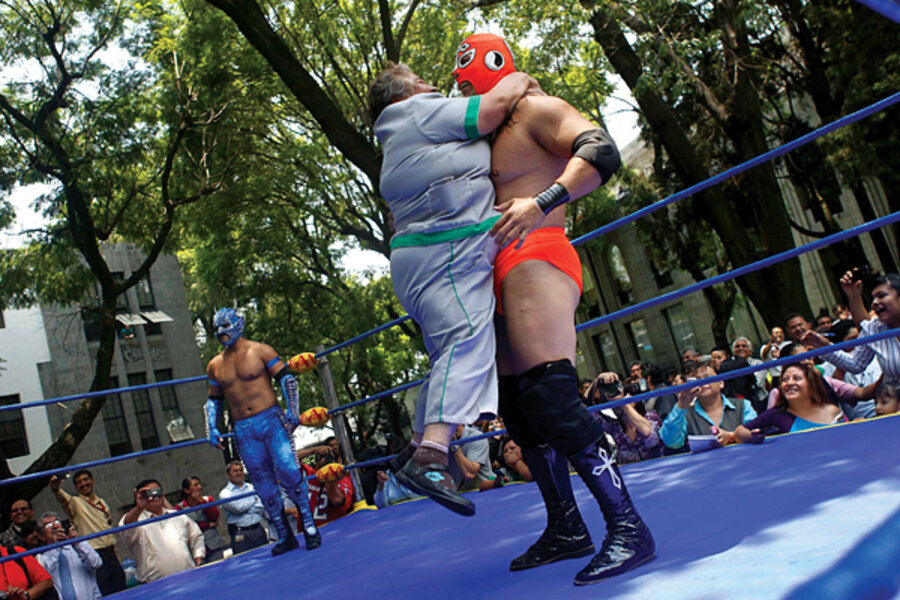Lucha Libre: A spandex-clad campaign against obesity in Mexico
Loading...
| Mexico City
The first wrestler emerges in a white cape, silver mask, and tight pants emblazoned to look like armor. Sagrado flexes the muscles of his bare chest, makes the sign of the cross, and descends a plank to the ring where he will face his opponent, Mephisto.
Dramatic debuts are a tradition in Mexico's famous lucha libre, where masked wrestlers from two teams, técnicos and rudos (roughly, "good" and "evil"), match up in fights that are as real as they are mocking.
Also traditional at a night of lucha libre is eating lots of junk food. On a Tuesday night at the Arena México, vendors rush up and down the aisles selling a variety of snacks: popcorn, oversized bags of spicy chips, corn dogs, candied apples, and pizza.
So the Mexico health ministry's recent partnership with lucha libre makes either for strange bedfellows or the perfect chance to attack obesity. A new campaign, called "Wrestling Against Obesity," aims "to motivate fans and the general population to have an active lifestyle through one of the most representative sports of our country, which involves speed, strength, agility, and physical condition," reads the ministry's website.
A luchador called "El Elegido" – "The Chosen" – is the campaign's official spokesman and stars in a video showing his daily exercise routine and healthy eating habits. AAA, one of the most popular promoters, will air the video at the start of its wrestling events.
The health ministry also plans to set up stands outside AAA matches to weigh willing attendees, measure their body mass index, and "orient" them to a healthy lifestyle.
That's amid all the competing booths selling candy and snacks.
Miguel Angel Sanchez has been selling treats outside the Arena México for 20 years, and says many parents still prefer traditional small bags of salted peanuts, pumpkin seeds, or dried fava beans with chile. "But the children, they prefer Kranky and Panditas," he says pointing to chocolate-covered flakes and gummy bears.
Inside, a small girl in pigtails munches on her dad's pizza and sips soda as the wrestler Mephisto sweeps on stage with a fierce mask and a black cape draped over his muscular torso. A man leans over and says, nodding toward Mephisto, "He used to be fat."
Lucha libre wrestlers are not always models of health and fitness. Before Mephisto's match against Sagrado, which he won, three buff técnicos took on three rudos with protruding paunches. The muscular técnicos won in a final round of back flips and tough tricks, and the potbellied rudos staggered from the ring, clutching their chests.







